This guided reading activity explores World War II and the Holocaust, providing students with a comprehensive understanding of historical events, key figures, and their profound impact on humanity.
Through primary sources, survivor testimonies, and structured discussions, students will analyze the causes, events, and legacy of this pivotal period in history, fostering empathy and critical thinking.

Historical Context of World War II
World War II arose from the aftermath of World War I, the Treaty of Versailles, and the rise of Adolf Hitler, who sought to expand German territory and impose Nazi ideology.
2.1 Causes of World War II
The causes of World War II were rooted in the Treaty of Versailles, which left Germany economically devastated and politically unstable. Adolf Hitler exploited these conditions, promising to restore German greatness and create a “Third Reich.”
Hitler’s aggressive expansion, including the remilitarization of the Rhineland and annexation of Austria, challenged the Treaty’s restrictions. The policy of appeasement by Britain and France allowed Nazi Germany to pursue territorial ambitions, such as invading Czechoslovakia. Meanwhile, the Nazi-Soviet Pact of 1939 shockingly aligned Hitler with Stalin, neutralizing the threat of Soviet intervention. These factors culminated in Germany’s invasion of Poland in 1939, prompting Britain and France to declare war, marking the official start of World War II.
2.2 Key Events of World War II
World War II was marked by pivotal events that shaped its course and outcome. Germany’s invasion of Poland in 1939 triggered the war’s start. The Blitzkrieg tactic allowed rapid conquests across Europe, including France, Belgium, and the Netherlands. The Battle of Britain in 1940 was a decisive air campaign that prevented Germany from invading the UK. In 1941, Germany launched Operation Barbarossa, invading the Soviet Union, while Japan’s surprise attack on Pearl Harbor drew the United States into the war. The D-Day invasion of Normandy in 1944 marked a turning point, leading to the liberation of Europe. The war ended in 1945 with the fall of Berlin and the atomic bombings of Hiroshima and Nagasaki.
The Holocaust was the systematic genocide of six million Jews and millions of others during World War II, carried out by the Nazi regime through concentration camps and mass executions.
3.1 What Was the Holocaust?
The Holocaust was a systematic genocide carried out by Nazi Germany between 1933 and 1945, targeting primarily Jewish people, but also other minority groups such as Romani people, disabled individuals, and political dissidents. It involved the use of concentration camps, ghettos, and mass executions to exterminate millions of people. The Holocaust was driven by the Nazi regime’s ideology of racial superiority and anti-Semitism, aiming to eliminate those they deemed undesirable. This dark period in history is marked by unimaginable atrocities and serves as a stark reminder of the dangers of hatred and prejudice.
3.2 Historical Context of the Holocaust
The Holocaust occurred during World War II, rooted in Nazi Germany’s rise to power in 1933. Adolf Hitler’s regime propagated antisemitic ideologies, blaming Jews for Germany’s post-World War I economic struggles. The Treaty of Versailles and hyperinflation fueled resentment, creating fertile ground for Nazi ideology. The Nuremberg Laws institutionalized discrimination, stripping Jews of citizenship and rights. As Nazi control expanded, persecution intensified, leading to the establishment of ghettos and concentration camps. This systematic dehumanization and segregation laid the groundwork for the genocide of six million Jews and millions of others deemed undesirable by the Nazi regime.
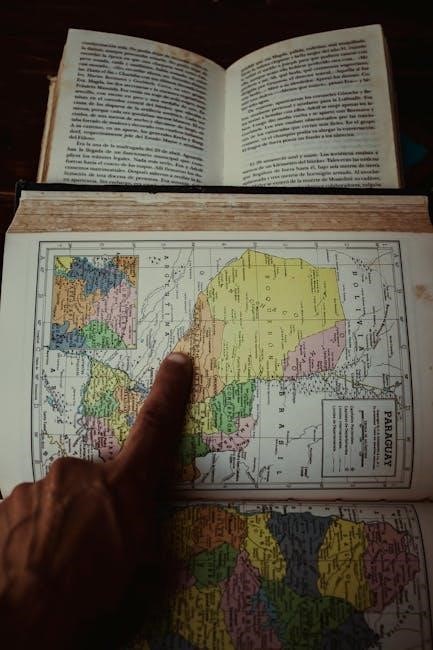
Key Events of the Holocaust
The Holocaust involved systematic persecution, including the Nuremberg Laws, Kristallnacht, and the Final Solution, leading to the genocide of six million Jews in concentration camps.
4.1 The Nuremberg Laws
The Nuremberg Laws, enacted in 1935, were a set of anti-Semitic decrees that stripped German Jews of their citizenship and prohibited marriage between Jews and non-Jews.
These laws marked the beginning of legalized persecution, laying the groundwork for the Holocaust by dehumanizing Jews and institutionalizing racial discrimination.
They were a crucial step in the Nazi regime’s plan to isolate and eliminate the Jewish population, leading to further oppressive measures and eventual genocide.
4.2 Kristallnacht
Kristallnacht, or the “Night of Broken Glass,” occurred on November 9-10, 1938, marking a violent escalation of Nazi persecution against Jews in Germany and Austria.
Nazi stormtroopers and civilians attacked Jewish communities, destroying synagogues, businesses, and homes, while authorities stood by. Over 90 Jews were killed, and thousands more were arrested and sent to concentration camps.
This state-sponsored pogrom signaled the escalation of anti-Semitic policies and marked a turning point in the lead-up to the Holocaust, as it demonstrated the Nazi regime’s willingness to openly persecute Jews with impunity.
4.3 The Final Solution
The Final Solution was the Nazi plan to exterminate the Jewish population of Europe during World War II, formalized at the Wannsee Conference in January 1942.
It involved systematic deportation of Jews to concentration and extermination camps, where millions were murdered in gas chambers or through forced labor and starvation.
This genocidal plan was central to the Holocaust, targeting not only Jews but also other perceived enemies of the Nazi regime, and remains one of history’s darkest atrocities.
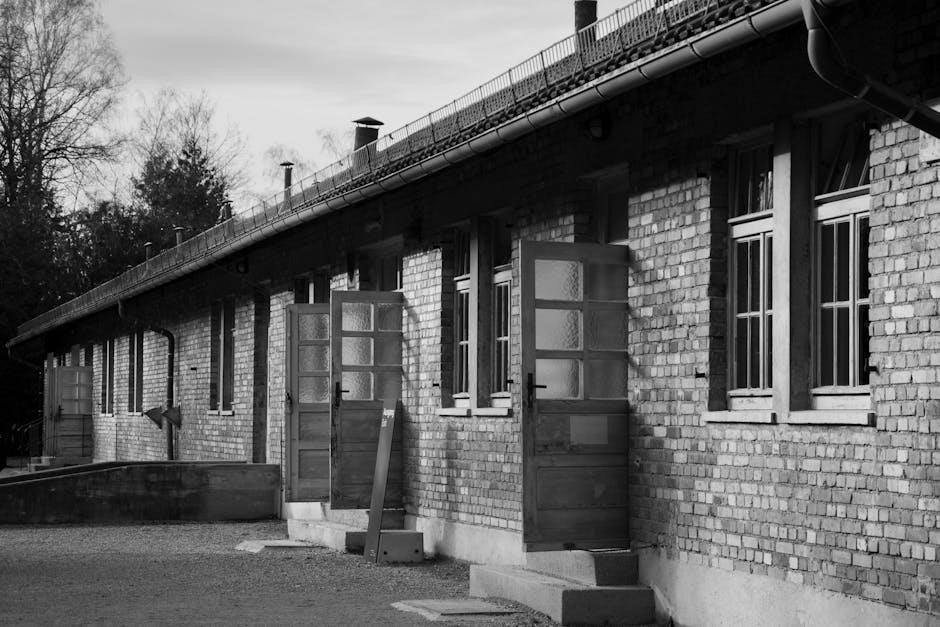
The Impact of the Holocaust
The Holocaust had a profound and devastating impact, resulting in the murder of six million Jews and millions of others targeted by the Nazis.
It caused irreversible emotional trauma, cultural loss, and a reevaluation of human rights, leaving a lasting legacy that continues to shape global perspectives on genocide prevention and justice.
5.1 Jewish Victims and Losses
The Holocaust resulted in the systematic murder of six million Jews, representing two-thirds of Europe’s Jewish population. Jewish communities were disproportionately targeted due to Nazi ideology, which deemed them inferior and scapegoated them for Germany’s post-World War I struggles.
The persecution began with discriminatory laws and escalated into forced ghettos, concentration camps, and mass executions. Families were torn apart, and entire communities were erased. The emotional and cultural loss was immeasurable, leaving deep scars on survivors and their descendants. The Holocaust remains a stark reminder of the horrors of genocide and the importance of combating antisemitism and prejudice in all forms.
5.2 Other Targeted Groups
While the Holocaust primarily targeted Jews, other groups also suffered brutal persecution under Nazi rule. Romani people, disabled individuals, political dissidents, Jehovah’s Witnesses, and homosexuals were systematically targeted. The Nazis viewed these groups as threats to their ideology of racial purity and social conformity. Thousands were subjected to forced labor, imprisonment, and execution. Additionally, Eastern Europeans, particularly Poles and Soviets, faced mass killings and enslavement. The Holocaust’s devastation extended beyond Jewish communities, highlighting the Nazi regime’s broader goal of eliminating all perceived enemies of the state. This persecution underscores the horrific scale of human rights abuses during World War II.
Personal Stories and Survivor Testimonies
Personal stories and survivor testimonies provide a deeply emotional and human connection to the Holocaust, allowing students to grasp its impact beyond statistics; These narratives reveal individual struggles, resilience, and survival, fostering empathy and understanding. Survivors share harrowing experiences of life in ghettos, concentration camps, and hiding in plain sight. Their stories highlight hope, loss, and the strength of the human spirit. By engaging with these accounts, students gain a profound appreciation for the personal toll of historical events and the importance of preserving these memories for future generations. These testimonies serve as vital educational tools, ensuring the Holocaust’s lessons are never forgotten.
Implementing the Guided Reading Activity
The activity involves structured reading sessions, primary sources, and discussion guides to engage students deeply with the material, fostering critical thinking and emotional connection.
7.1 Strategies for Effective Guided Reading
Effective guided reading involves preparing students with background knowledge, using dual coding techniques, and incorporating annotations to enhance comprehension. Teachers should provide clear instructions, model active reading strategies, and ask open-ended questions to foster critical thinking and engagement. Differentiated instruction ensures all students can participate, while structured discussions allow for deeper analysis of texts. Incorporating primary sources, such as survivor testimonies, adds authenticity and emotional connection. Timely feedback and reflection opportunities help students process complex themes like the Holocaust and WWII, promoting empathy and historical understanding.
7.2 Role of the Educator
The educator plays a pivotal role in facilitating the guided reading activity by creating a supportive environment for students to engage with sensitive topics like World War II and the Holocaust. They provide historical context, clarify complex themes, and ensure respectful discussions. Teachers also act as mediators, guiding students through primary sources and survivor testimonies to foster empathy and understanding. Their ability to address diverse perspectives and promote critical thinking is crucial for helping students grasp the human impact of these events.
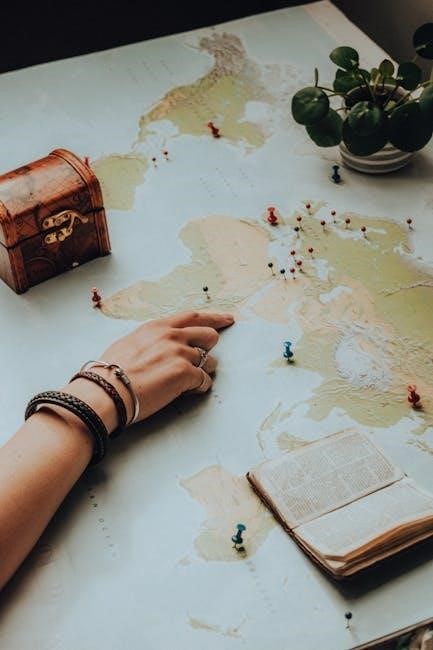
Analyzing Primary Sources
Analyzing primary sources, such as photographs, documents, and survivor testimonies, allows students to engage directly with historical evidence, fostering a deeper understanding of World War II and the Holocaust.
8.1 Types of Primary Sources
Primary sources for World War II and the Holocaust include documents like the Nuremberg Laws, photographs of concentration camps, survivor testimonies, and historical films. These sources provide firsthand accounts of events, offering students authentic insights into the experiences of individuals during this period. Diaries, letters, and official records also serve as valuable resources, allowing for a more personal and nuanced understanding of history. By examining these diverse materials, students can piece together a comprehensive narrative of the war and its impact on various communities.
8.2 How to Analyze Primary Sources Effectively
When analyzing primary sources, students should begin by identifying the author, date, and context to understand the source’s purpose and potential biases. They should read the material carefully, highlighting key details and asking questions about its significance. Comparing multiple sources can reveal different perspectives and help verify accuracy. Encouraging students to reflect on how the source relates to broader historical events fosters deeper understanding. Guided questions and discussions can further enhance analysis, ensuring students critically evaluate the material and draw meaningful conclusions.
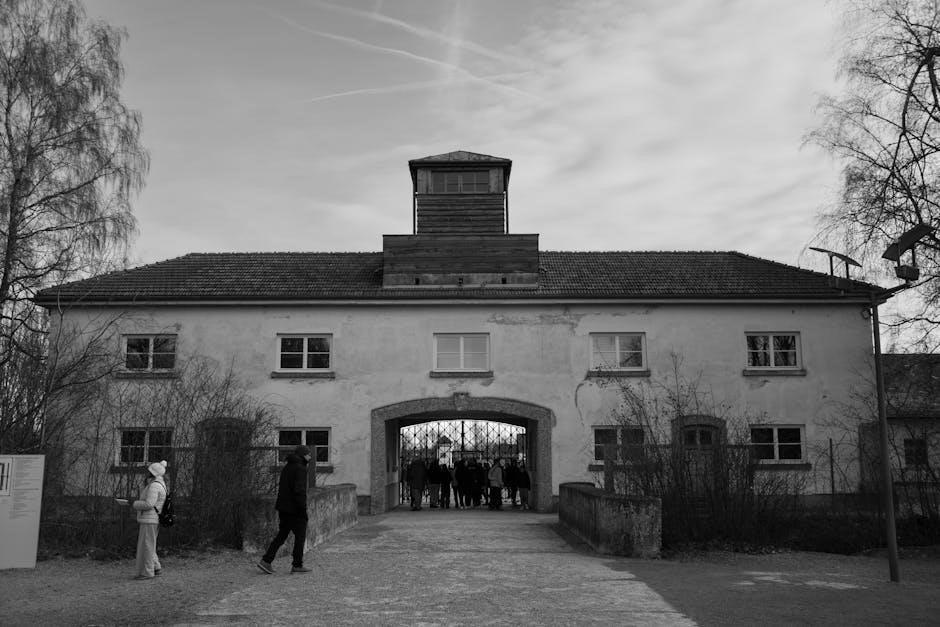
Facilitating Discussions and Debates
Fostering meaningful discussions and debates is crucial for helping students engage with the complexities of World War II and the Holocaust. Educators should create a respectful and open environment where students feel comfortable sharing their thoughts. Encourage the use of evidence from primary sources to support arguments, promoting critical thinking and historical understanding. Open-ended questions can guide the conversation, while structured debates allow students to explore different perspectives. Emphasize the importance of empathy and respect when discussing sensitive topics, ensuring all voices are heard and valued. This approach not only deepens understanding but also fosters collaboration and reflection.

The Aftermath of World War II and the Holocaust
The aftermath of World War II and the Holocaust involved accountability through the Nuremberg Trials, rebuilding shattered communities, and grappling with the profound moral and societal impacts of these events.
10.1 The Nuremberg Trials
The Nuremberg Trials were a series of proceedings held in Nuremberg, Germany, after World War II, aimed at prosecuting top Nazi officials for war crimes and crimes against humanity.
Established by the Allied powers, these trials marked a significant moment in international justice, setting a precedent for accountability. They addressed atrocities like the Holocaust, aggressive warfare, and human rights violations. The trials concluded with convictions, executions, and prison sentences, serving as a foundation for modern international law and a reminder of the consequences of unchecked tyranny and genocide. The Nuremberg Trials remain a pivotal moment in history, emphasizing justice and accountability for mass atrocities.
10.2 Rebuilding Europe
After World War II, Europe faced immense devastation, requiring extensive reconstruction efforts. The Marshall Plan, initiated by the U.S., played a crucial role in economically revitalizing war-torn nations, fostering stability and growth. Politically, new governments were established, and denazification processes aimed to rid societies of Nazi influence. Socially, communities grappled with the trauma of the war and the Holocaust, leading to a renewed emphasis on human rights and international cooperation. Rebuilding Europe laid the groundwork for the formation of the European Union and a commitment to peace and unity in the post-war era.

The Legacy of the Holocaust
The Holocaust serves as a profound reminder of the horrors of genocide, racism, and totalitarianism. It has left an indelible mark on global consciousness, underscoring the importance of combating prejudice and protecting human rights. The systematic murder of six million Jews and millions of others deemed undesirable by the Nazis highlights the dangers of unchecked hatred and authoritarianism. The legacy of the Holocaust is reflected in international laws against genocide, the establishment of the Nuremberg Trials, and the creation of the Universal Declaration of Human Rights. Survivors’ testimonies and memorials continue to educate future generations, ensuring that such atrocities never recur.

Addressing Holocaust Denial
Holocaust denial remains a concerning issue, often fueled by misinformation and anti-Semitic ideologies. The rise of technology and social media has enabled the spread of false narratives, distorting historical facts about the Holocaust. Education and awareness are critical in combating denial. Accurate historical records, survivor testimonies, and educational programs play a vital role in countering such misinformation. By promoting factual understanding and fostering empathy, society can work to prevent the resurgence of such harmful ideologies. Addressing denial requires a collective effort to uphold the truth and honor the memories of the victims of the Holocaust.
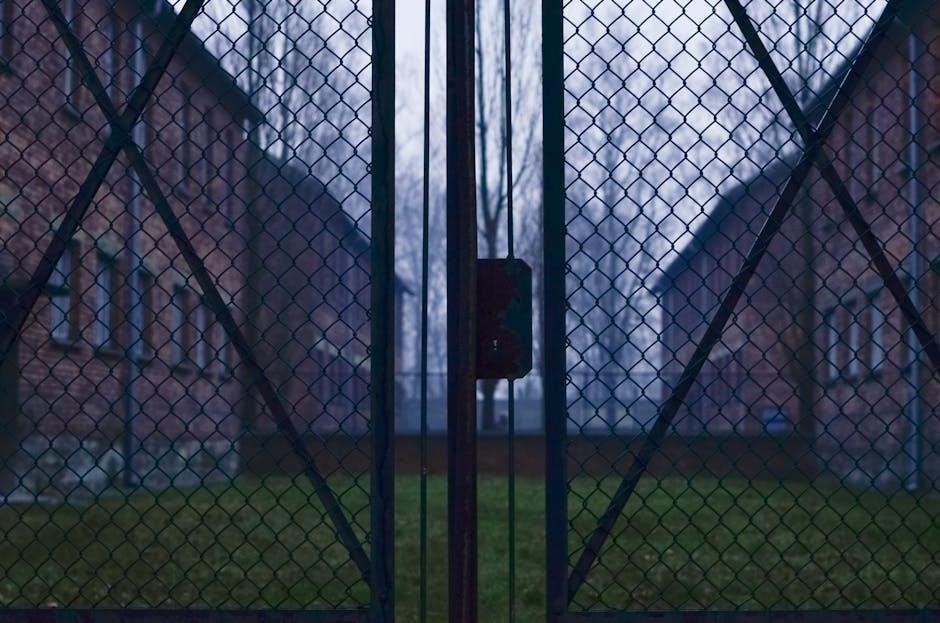
The Role of Technology in Holocaust Education
Technology has revolutionized Holocaust education by providing innovative tools to engage students and preserve history; Virtual reality experiences, interactive archives, and AI-powered platforms offer immersive learning opportunities. Digital archives, such as the USC Shoah Foundation, allow access to survivor testimonies, fostering a deeper connection to personal stories. Online educational resources and multimedia presentations enhance understanding of historical contexts. Additionally, technology facilitates global collaboration, enabling students to share perspectives and learn from diverse experiences. However, it is crucial to ensure that digital tools are used responsibly to maintain the integrity and sensitivity of Holocaust education, avoiding misinformation and promoting factual accuracy.
The guided reading activity on World War II and the Holocaust provides a profound exploration of one of history’s darkest periods. By examining primary sources, survivor testimonies, and historical events, students gain a deeper understanding of the atrocities committed and their lasting impact. The activity emphasizes the importance of empathy, critical thinking, and historical awareness. It also highlights the need to combat Holocaust denial and promote tolerance. Through this structured approach, students are encouraged to reflect on the lessons of the past, fostering a commitment to preventing future genocides and upholding human rights. Education remains a powerful tool in preserving memory and promoting justice.
Additional Resources for Further Learning
For deeper exploration, consider the following resources:
- United States Holocaust Memorial Museum offers extensive archives and educational materials.
- Yad Vashem provides historical records and survivor testimonies.
- The Diary of Anne Frank offers a personal perspective on the Holocaust.
- BBC History features detailed articles and documentaries on World War II.
- Online courses like History of World War II on platforms such as Coursera or Khan Academy.
These resources enhance understanding and encourage further reflection on this critical historical period.